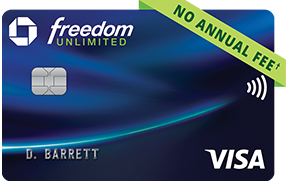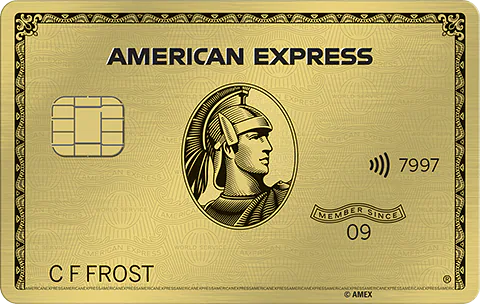Credit cards are definitely one of the wonders of the Financial world. They let you use free money for a period of 30 days and then a further 15-28 days to pay the bill. So a member gets at most 45 days to pay up their bills using their credit cards. In this article, we will take you through some of the best practices to use credit cards.
There are advantages of a credit card but there is a big downside to this free credit period. Credit card companies charge huge fees and interest on late payments and interest. Credit Card companies charge some of the most prohibitive interest rates. For example, some credit cards charge in the range of 2.5% to 4.5% per month of the outstanding amount.
1. Always pay your bill in full and on time
Ensure to pay your credit card bills on time and always in full. This is the surest way to ensure a good credit score and also keep your finances healthy. Paying the least amount due and rolling over credit looks good. The punishing interests and penalties will eat into your hard-earned savings. Think of interest charges on credit cards as negative balances. It eats into your savings and earnings.
If a card member misses payments, they could end up paying penalties of hundreds of dollars. Also, the interest charged can very well run up to thousands of dollars. These are unnecessary payments you can avoid by paying bills on time. Another negative impact of missing timely bill payments is the hit on the credit score of a user. This will further affect the future loans or mortgage requirements of the member.
As a good practice automate the card payment. This will remove the hassle and you will pay in full to the Credit Card Company near the payment due date. This will prevent any accidental oversight. Also, it will prevent any delay in payments and avoid late penalty charges. Credit cards have different billing and payment cycles. It is difficult to remember payment dates if you have many cards.
2. Keep tracking your Monthly Statements
Always keep track of your monthly statements to detect any anomaly in the statement. There might be any fraud activity or extra fees which may go under. Also, be careful of interest rates or charges that the credit card company might be charging you. Setting up notifications on your phone or a credit card app on your phone will help you keep a tab on the spending on the card.
Billing errors though very rare can creep into the card statement. A few minutes spent going through the card statements may help you later with heartburn.
Credit Card companies also offer fraud prevention. The minute a user reports fraud, they can relax as any transaction is the company’s responsibility. So as soon as you reach out to the company, they can help you take care of any fraudulent activity on your card.
3. Stay well below the credit limits of the credit cards
To improve your credit score do not use your credit limit. Try to keep your monthly spending below 30% of your total credit card limits. “Credit Utilization” is the term for this credit card. This reports how much of the available credit is a customer actually using. Lower credit utilization is more financially responsible for a user.
Running through an example, if you have 2 credit cards with a total $20,000 limit on both cards. 30% of the same works out to be $6,000. So keeping your total spend of a month below $6,000 will not affect your credit score. It is always a good idea to be a responsible spender and not go overboard with the limit. An extra payment will help improve the score and bring you back within the limit.
4. Best practices to use credit cards and know your Credit Card
Few card members are aware of the features or the fees on their cards. Users usually buy a credit card from a card sales guy or a recommendation from a friend or family member. Knowing your own credit card can help you detail out the fees, penalties, or charges. Usually, these details are available on the credit card website or their app.
Look out for some of the below charges or fees applicable to your card as the same may impact you as a user.
i. Annual Fees
Firstly, always try and opt for credit cards with no annual fees. The cards which annual levy fees usually offer much more rewards and value. Always, take a stalk if the extra fee is worth the extra benefit the card is offering. Unless you are getting 3 times the rewards from a credit card’s annual fees, there is no point in paying the same. A $1000 annual membership card may offer a golf membership but if you aren’t a golf player the fees are not worth it.

ii. Balance Transfer Fee
Secondly, look for the balance transfer fees. This fee refers to transferring your credit card debt to another provider. Companies charge a fee of 3-5% of the outstanding amount as a one-time fee for a balance transfer. Do check what your credit card is offering you for this service.
iii. Foreign Transaction Fees
Credit Cards may charge exorbitant fees on foreign transactions. Always check the currency display on any eCommerce site so that you are paying in USD. If you are a frequent traveler, choosing a specific card that offers better Foreign Transaction charges makes sense. In spite of additional cost, a credit card with zero foreign transaction fees may come out beneficial for frequent travelers.
iv. Late Payment Charges
Credit cards also levy fees for late payment charges. These Late payment fees can start from $30 and can be high as $250. If we look at some of the popular credit cards like Chase Ultimate Rewards Card, which charges a $40 late payment fee. This is an unnecessary penalty for skipping a payment. The best way is to automate the payment and this takes care of any missed payments.
v. Interest Charges
Lastly, always pay attention to the interest rate charges applicable to your credit cards. Credit cards are notorious for their high-interest charges. Banks collect billions of dollars in profit each year by charging this interest. The Interest is known as the Annual Percentage Rate (APR). If we see the details of the American Express Gold card. The card charges an APR of 20.24% to 27.24% based on the creditworthiness of the card members.

5. Manage the emotional triggers which make you spend
We all falter sometimes with our credit card payments. Obviously, late payments and interest charges are the facts of life. Be responsible, and keep yourself away from triggers that turn into a spending spree. Fast fashion and easy access have made shoppers fall into the spending spree.
Finally, control your surrounding environment. If you are somebody who gets scared of spending cash. Do the same. Don’t use cards, use cash. You may lose on some rewards but would be happy and financially healthy. Identify your own trigger and own your mistakes.
Some credit card companies increase your credit limit if you pay your bill on time or you are holding the card for some time. These credit limits are usually set up with the consent of the card members. Having too broad or large limits may do more harm to you than helping you in your time of need. You may ultimately, fall into an overdrive of spending or into a debt trap.
The best practices to use credit cards are built over time
In conclusion, remember it takes time to build new habits. But today is a good day to start. Keeping a close watch on your credit statement, paying bills on time, and an emotional check on spending triggers can help you use your credit cards. Enjoy the advantages the 21st-century money is providing without the downside.
